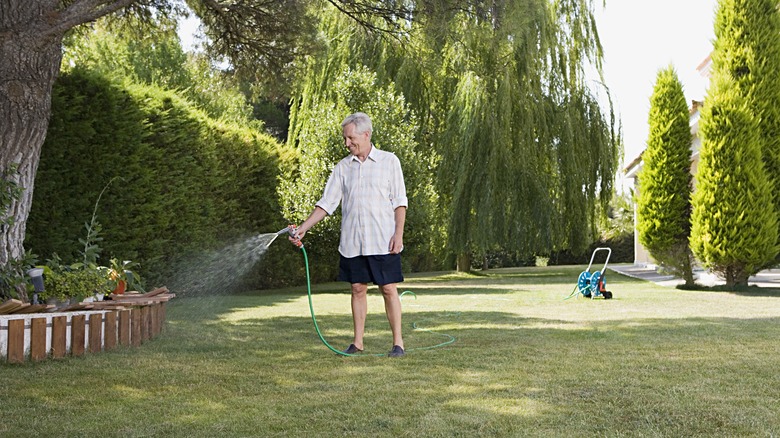Essential Watering Tips For Growing Perennial Ryegrass Seed
Every plant varies in its watering needs, in that some plants are a complete diva, craving water all the time, while others only want a squirt of water now and then. Grass is a bit different, especially when growing from seed. One grass that is a good lawn candidate and grown throughout the United States is perennial ryegrass, which isn't as high-maintenance as annual ryegrass. This cool-season grass is a good choice for high-traffic areas thanks to its ability to tolerate wear. Perennial ryegrass emerges quickly from seed, growing in just five to 14 days. Yet, achieving this rapid growth means following essential watering tips: when watering your perennial ryegrass seed, you should water frequently to the right depth, and adding additional water in case of lack of rain.
Watering any new seeds is an art that requires a delicate balance between watering too much and not watering enough. While other plants may be extremely picky with their watering needs, perennial ryegrass can tolerate very wet soil if it has adequate drainage. That doesn't mean you can just spray it with a hose a few times a day, and then wait for fresh growth. You must water perennial ryegrass on a good schedule with the right amount of water, as well as account for rainwater in the process. As you prepare to grow your new ryegrass, pay attention to these crucial watering tips for the healthiest plant and best results.
Best watering tips for perennial ryegrass seed
Before you plant your seeds, prepare for the soil for germination by thoroughly watering the soil to add the crucial needed moisture and create an environment where they can flourish. Once you've planted perennial ryegrass seed, you will need to water frequently , preferably to a depth of 6 to 12 inches for the healthiest plants. Perennial ryegrass features a short root system, therefore, watering to at least 6 inches lets the roots absorb the moisture quickly. For optimal results, water the seeds for a few minutes via your irrigation system or by hand-watering daily, ideally in the early hours of the morning or evening. Choosing to water during these cooler times of day reduces the risk of evaporation, particularly if you're growing grass from seed in warmer months.
When you've finished watering, the soil should be moist but not water logged, ideally until 60% of the grass emerges in your lawn. For quick germination, your seeds should receive at least 1 inch of water weekly, including any rainfall. After the seeds establish, reduce watering to two to times a week. Adjust the watering schedule for weather, skipping watering during rainy weeks, if needed.

